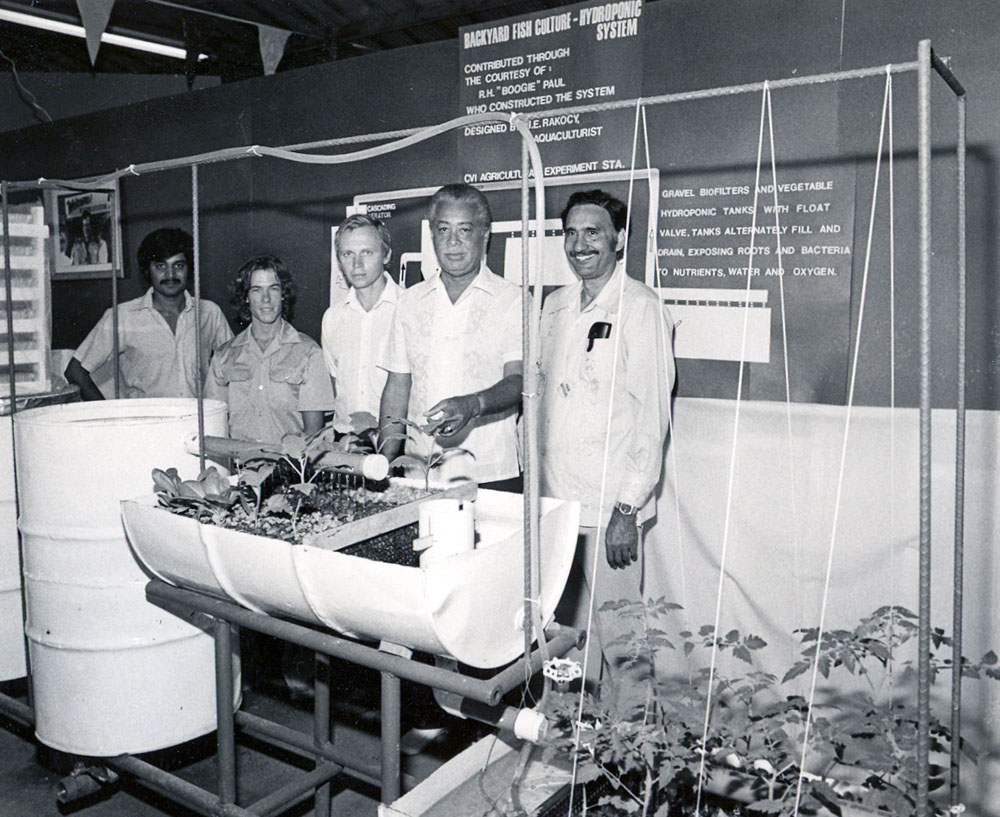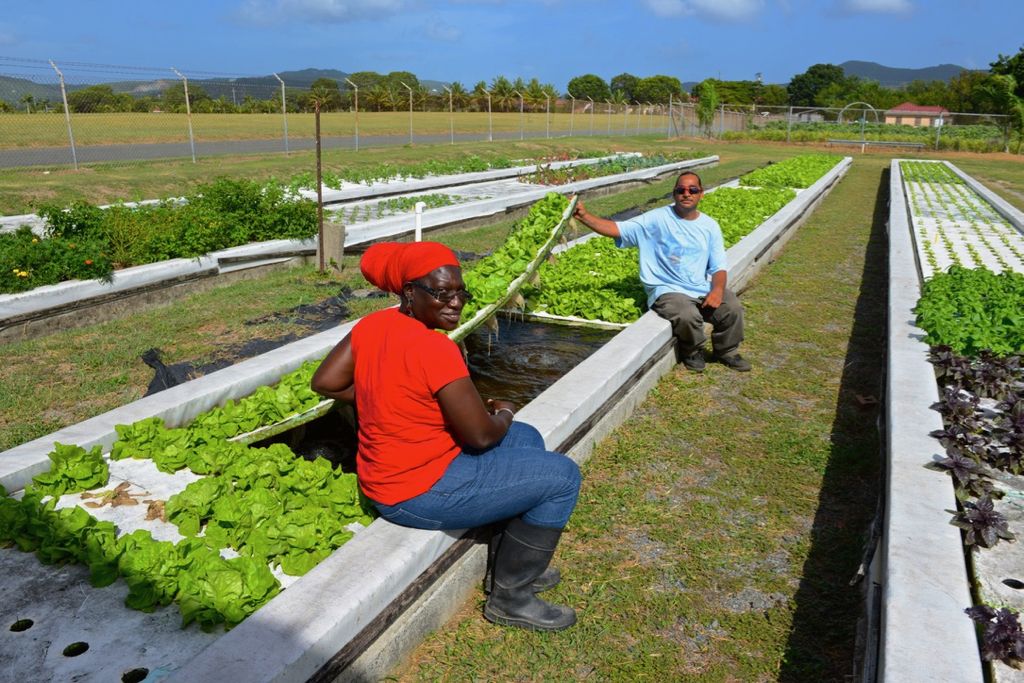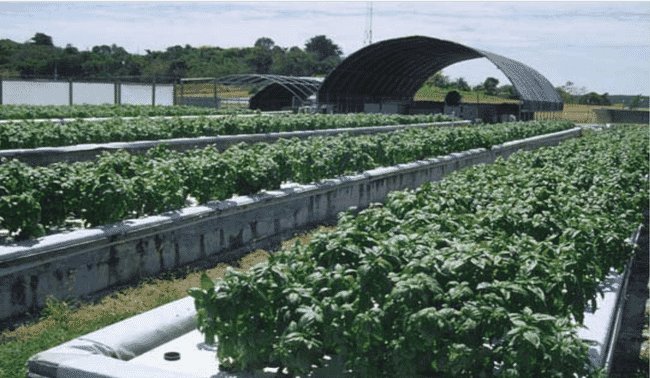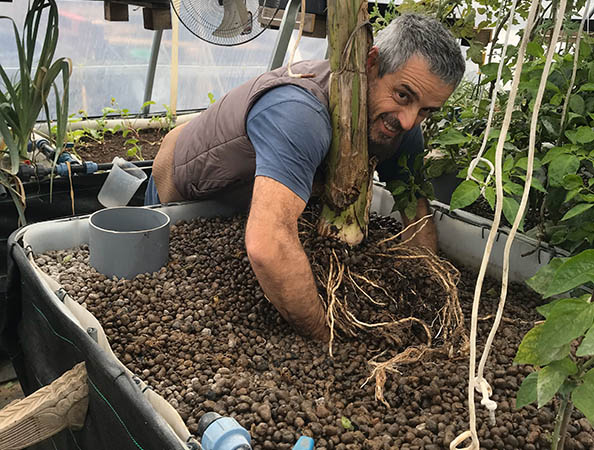Dr. James Rakocy
Being a young high school student was inspired by Leonard Pampel. He was the first person known to have used plants to treat wastewater. His experiment was conducted in the aviary building at the Milwaukee County Zoo. Mr. Pampel obtained a patent for that system, and was assisted by a young high school student named James Rakocy who helped him design integrated aquarium systems, later providing his discoveries to James for his doctoral thesis at the University of Auburn. After obtaining a PhD in aquaculture from Auburn University, I was assigned to lead the Aquaculture Program at the Agricultural Experiment Station (AES) in developing commercially feasible systems for tilapia production. Since there is little fresh water in the Virgin Islands, we had to develop intensive production systems that conserved and reused water. We successfully developed three commercially feasible systems: cage, aquaponic and biofloc systems .After obtaining a PhD in aquaculture from Auburn University, I was assigned to lead the Aquaculture Program at the Agricultural Experiment Station (AES) in developing commercially feasible systems for tilapia production. Since there is little fresh water in the Virgin Islands, we had to develop intensive production systems that conserved and reused water. We successfully developed three commercially feasible systems: cage, aquaponic and biofloc systems .
What he did?
In the 1970s, his doctorate focused on cultivating plants with fish. He created an ecosystem where the nutrients from the fish would provide fertilizer for the plants and the plants would absorb the nitrogen and phosphorus from the fish excretions, thus keeping the water crystal clear and free of algae.
In the 1980s, he and he´s team built an aquaponic system at the University of the Virgin Islands (UVI) and over the next 30 years perfected it and demonstrated its economic viability. Without fear of being wrong, the UVI system was the first commercially viable system.
What conclusions did he reach?:
- His system allowed for regular harvests of fish and plants without water exchange for long periods of time and with only a small amount of supplementary nutrients: Potassium (K), Iron (Fe), and Calcium (Ca), while maintaining pH around 7.0.
- Tilapia would be the ideal fish.
- He used a conical clarifier to settle sedimentable solid waste and prevent gravel used as a substrate from becoming saturated with sludge.
- He incorporated a simple filter, a fine bird net, thus controlling suspended solids and dissolved nutrients while being cheap and biologically efficient.
- He later replaced gravel beds with floating rafts, also known as DWC (Deep Water Culture).
- The incorporation of the filter (the bird net) allowed bacterial decomposition of matter thus generating inorganic matter (mineralization). He called this filter a biofilter.
- This biofilter was used as a tool for water quality regulation:
- Frequent cleanings: Good for green leafy plants. More nitrate levels.
- Infrequent cleanings: Good for fruiting plants. Less nitrate levels.
- Optimal feeding rate: Determined the relationship between fish feeding and plant nutrient absorption capacity, thus maintaining water quality. The ideal was 60gr/m2.
- He determined that water replacement was 1% of total daily, which would maintain low and regular levels of dissolved and particulate organic matter, producing very healthy plants that grow faster and are resistant to diseases.
- He determined that aquaponic plants are more pest-resistant than plants in hydroponic systems that do not have the benefit of organic compounds and depend solely on inorganic nutrients.
- He concluded that hydroponic systems produce plants that are often more stressed, which creates a higher sugar content in leaves, which in turn attracts pests.
- He determined that once established (system cycle), aquaponic systems become stable enough so that regular nutrient measurement is not necessary.
- For commercial aquaponics, multiple systems increase biosecurity, as any disease problem can be contained.
- By producing your own fry and seedlings on site, the introduction of diseases from hatcheries and nurseries can be excluded, making aquaponic systems more sustainable.
The project
The system consisted of a gravel bed where plants grew, a conical filter settling tank for collecting larger solid waste, and a separate tank for the fish.
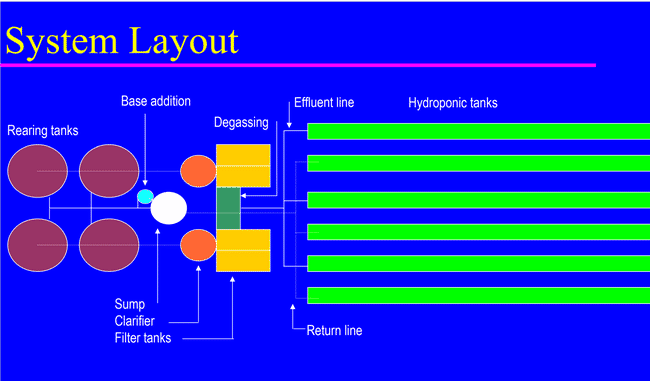
The gravel growing beds were replaced by floating rafts, a system known as deep-water culture (DWC). To avoid clogging, the addition of thin plastic bird netting collected suspended solids. Without it, solids would settle in the growing beds, resulting in denitrification, a process that removes the nitrate that the plants need for growth. Moreover, denitrification would produce alkalinity, eliminating the opportunity to add calcium and potassium hydroxide to increase the pH. Calcium and potassium are the two elements regularly added to prevent plant mineral deficiencies, so solid accumulation in the tanks that housed the rafts had to be eliminated in order to deliver calcium and potassium to plants in the hydroxide form.
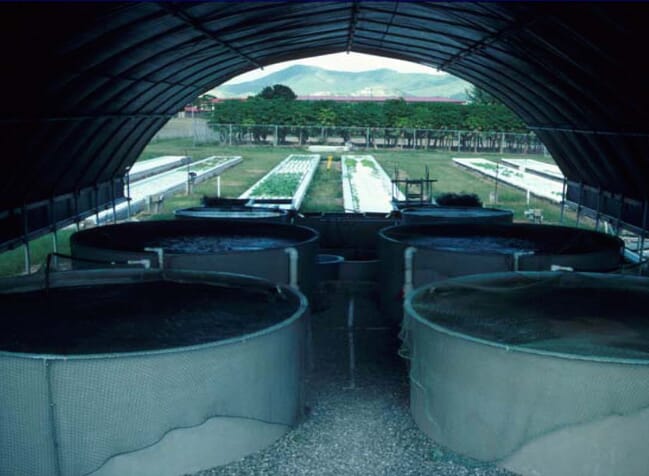
Conclusion
In Dr. Rakocy’s opinion, commercially viable aquaponic operations are successful because they are large and located near a large market, use lettuce as the plant species and add value by selling it as a cut and bagged product. In addition, green leafy vegetables should be used since they are the most profitable component in an aquaponic system, with a high turnover rate, harvested every month and widely accepted in the market. Other profitable plants used in aquaponic systems include herbs such as basil that grow quickly and can be partially harvested to continuously supply markets
The sentence you provided translates to “Currently, research is being conducted on aquaponics in many countries. New approaches are being studied, as well as the use of different species of high-value fish and plants. In addition to the expansion of commercial operations, aquaponics is already very popular among amateur farmers, who are producing a wide variety of plants and fish in multiple aquaponic designs using locally available and affordable materials. Given the wide range of interest in aquaponics, it predicts a bright future.
